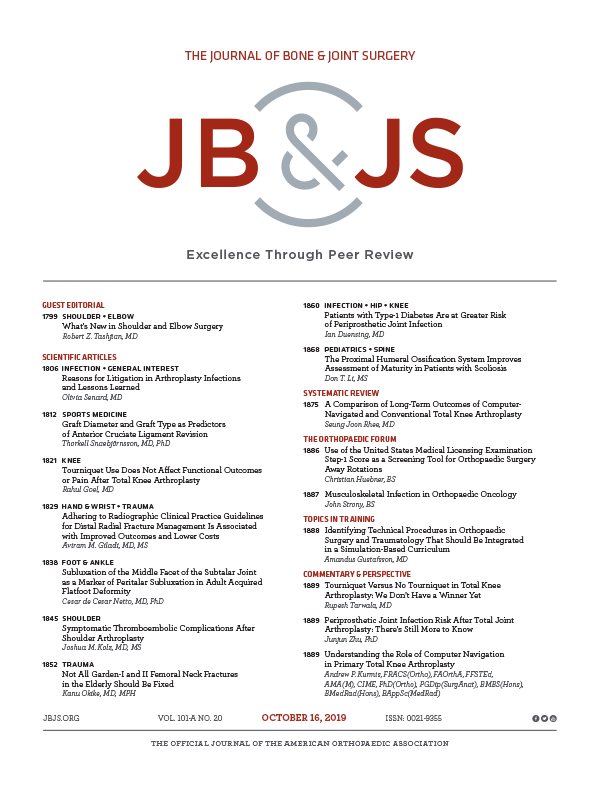
Enoxaparin superior to warfarin in prevention of venous thromboembolism after primary TKA

Enoxaparin superior to warfarin in prevention of venous thromboembolism after primary TKA
Prevention of venous thromboembolic disease following primary total knee arthroplasty. A randomized, multicenter, open-label, parallel-group comparison of enoxaparin and warfarin
J Bone Joint Surg Am. 2001 Jun;83-A(6):900-6Synopsis
349 patients undergoing knee arthroplasty were randomized to receive thromboprophylaxis with enoxaparin or warfarin postoperatively. Patients were assessed for venous thromboembolism defined as deep vein thrombosis and pulmonary vein thrombosis. Enoxaparin was significantly more effective than adjusted‐dose warfarin in reducing the occurrence of asymptomatic venous thromboembolism, including proxi...
To view the full content, login to your account,
or start your 30-day FREE Trial today.
FREE TRIAL
LOGIN
Forgot Password?
Explore some of our unlocked ACE Reports below!

Learn about our AI Driven
High Impact Search Feature
Our AI driven High Impact metric calculates the impact an article will have by considering both the publishing journal and the content of the article itself. Built using the latest advances in natural language processing, OE High Impact predicts an article’s future number of citations better than impact factor alone.
Continue



 LOGIN
LOGIN

Join the Conversation
Please Login or Join to leave comments.